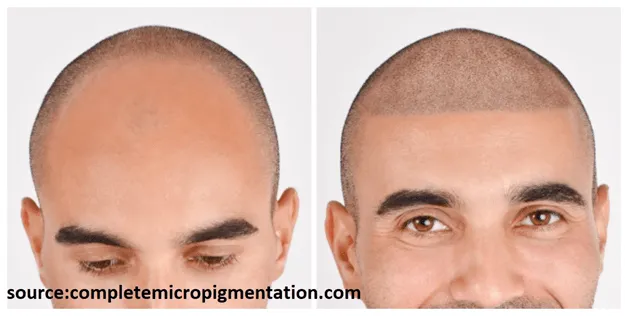Are you also concerned about the hair transplant results? After the procedure, hair grows in a predictable pattern. The following is a list of the hair transplant outcomes every month:
| PERIOD | HAIR TRANSPLANT OUTCOMES |
|---|---|
| Three days later | There will be hair loss. |
| One week to six weeks | The shedding of hair will continue. |
| Four to six weeks | Hair loss as a result of some short-term boils |
| Three months | Hair will begin to penetrate the scalp in thirty percent of cases. |
| Four to five months | Hair fall causes fifty percent of hair to penetrate the scalp, so utilize rejuvenating medication on your scalp. |
| Six to nine months | For some individuals, the complete outcomes are visible. |
| Twelve to fifteen months | The majority of people see outcomes after a year of surgery. |
Hair transplantation is a procedure that you can plan ahead of time. You do not have to be concerned about what will happen next or the outcomes. All of the post-operative stages will be described in detail by your specialist. There will be nothing unexpected, so do not be concerned.
Several people who have had their hair transplanted are concerned regarding their freshly transplanted hair. They usually go to their hair transplant surgeon to discuss what is going on and why they are not getting the results they want.
Few of them start comparing their hair growth to images of other patients’ hair growth on the internet. When they realize that they are behind schedule, it increases their stress.
So, how do you avoid becoming one of them? You can find out what kind of results you can expect after your hair transplant. You will be less stressed because you will know what to expect.
What you can try right after your hair transplant surgery?
Following are some things you can try right away after your hair transplant to receive the best results:
- Reduce the amount of the usual food you eat and make sure it’s not too spicy. Also, refrain from drinking or smoking.
- Follow your doctor’s instructions for taking your medications. Take your medicine with food or a glass of milk rather than on an empty stomach.
- You do not need to stay in bed after your procedure. Watching TV, reading, or using your laptop are examples of commonplace activities.
- Do not push yourself beyond your limits. Do not stay up any longer; go to bed as soon as possible.
- Avoid applying pressure to your head and jerky movements. Keep your hands away from your bandages as well.
- You can lie down on your back or turn sideways. Do not, however, sleep while keeping your hand beneath your head.
- You should see your doctor again for removing the bandage and other shampoo and cleaning instructions. Massage your forehead at least three times a day after releasing the dressing to reduce swelling.
What Should You Expect Following a Hair Transplantation?
After a hair transplant, your fresh planted grafts follow this development pattern:
Your grafts will start to work to restore their blood supply three days after the transplant, which will lead to some hair shedding at first.
Shedding will happen from week one to week six after the hair transplantation. After surgery of four to six weeks, you may develop boils; but, this is only temporary.
The roots are adequately in place following a few hairs that fall for a few weeks. Do not get worried if you see white material over your hair roots frequently. In three to four months, the seeds will start to sprout.
Once your hair shaft pierces your skin and begins to develop, it will go through several changes in its overall look, contributing to the overall outcome. Hair loss may happen in your natural hair at this time; use hair fall medications as directed by your specialist.
This hair shaft will be light in weak, color, and delicate, gradually improving over time. It will get for a while indistinguishable from your natural hair after that.
Please keep in mind that this is an estimate of where you might be after your hair transplant. After twelve months, few people notice their desired results; similarly, few late growers notice their desired results after fifteen to eighteen months.
Your hair continues to grow in the transplanted area of your scalp after your hair transplant. Your new hair may appear denser or sparser depending on:
How loose is the skin around your head?
- The thickness of your transplanted follicles
- Your hair quality
- Your hair curliness
It is crucial not to forget that hair transplantation only works in your transplanted site; you will continually lose hair in your untreated scalp areas. Other medicines, such as PRP or Minoxidil therapies, may be needed to help with hair growth.
Make sure you have realistic expectations before getting a hair transplant. Consider speaking with your specialist regarding your expectations if you have already had a hair transplant. Your specialist will give you a clearer picture of what you can expect and help your hair grow faster.
Yet, remember that the precise outcomes of a hair transplant are only visible after twelve to fifteen months. As a result, be patient.









